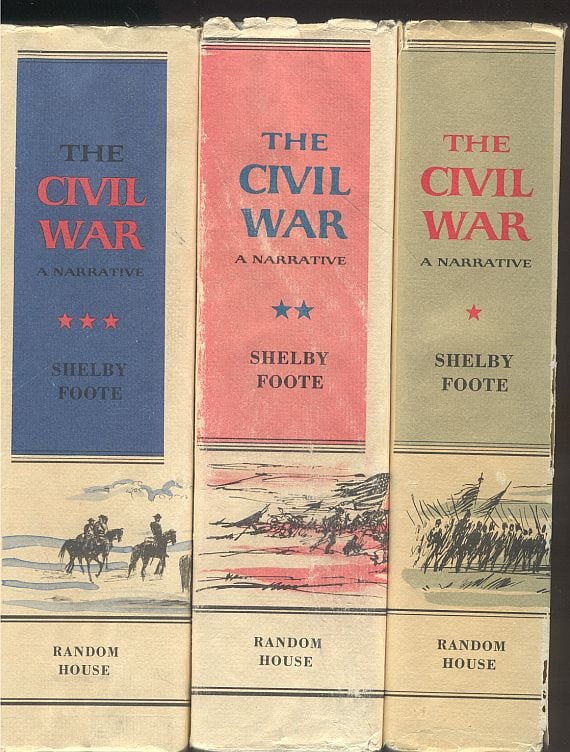


The Civil War is the seminal event in American history. Other parts, though, read like Homer or the Bible. Parts of it read like a novel, it is true. Because Foote wrote fiction, it’s tempting to call this novelistic, but that’s far too reductive. This go-round, I decided a review was in order, though most things that can be said about Foote and his opus have already been written.įirst and foremost, The Civil War: A Narrative is a masterpiece of storytelling. Since my first read-through ended in ’98, in the era of AOL disks and dial up, I never had reason to put down any thoughts. The second, I took my time and enjoyed the journey. The first time around, I was young and just wanted to finish. Not in a concerted way, but at my leisure. Over the last several years, I have been making my way through them again. If finishing Foote’s trilogy did not actually make me an adult, it marked the beginning of my serious adult reading. In the paperback versions I have, the first book ( Fort Sumter to Perryville) comprises 810 pages of text, the second ( Fredericksburg to Meridian) 966, and the third ( Red River to Appomattox) 1060, for a grand total of 2,836 pages (not including the acknowledgments, bibliographies, and indexes). When I finished the last page, my initial response was one of relief.

I first read The Civil War: A Narrative while in high school (which should tell you all you need to know about my popularity). He may be dead, but because of this achievement, his name lives on forevermore. It brought Foote fame and fortune unusual for an authority on the Civil War. When he finished, he had created a literary Rushmore, not just a book (or rather three books) but a veritable monument. When he began working on the project, he was a novelist of some acclaim, though not widely known. It’s hard to know where to start when discussing Shelby Foote’s three-volume The Civil War: A Narrative. Private Barry Benson, Army of Northern Virginia (1880), quoted by Shelby Foote at the conclusion of Ken Burns’ The Civil War

Who knows but again the old flags, ragged and torn, snapping in the wind, may face each other and flutter, pursuing and pursued, while the cries of victory fill a summer day? And after the battle, then the slain and wounded will arise, and all will meet together under the two flags, all sound and well, and there will be talking and laughter and cheers, and all will say, Did it not seem real? Was it not as in the old days?” “In time, even death itself might be abolished who knows but it may be given to us after this life to meet again in the old quarters, to play chess and draughts, to get up soon to answer the morning roll call, to fall in at the tap of the drum for drill and dress parade, and again to hastily don our war gear while the monotonous patter of the long roll summons to battle.


 0 kommentar(er)
0 kommentar(er)
